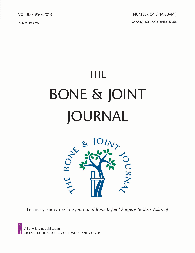
ARTHROPLASTY
RCT1: Knee in flexion following total knee arthoplasty reduces blood loss and transfusion
Bone Joint J. 2014 Feb;96-B(2):201-9180 patients undergoing total knee arthroplasty were randomized to either have their operated knee placed in 120 degrees passive flexion for the first 6 hours postoperatively followed by flexion by placing over a pillow, or to full passive knee extension. The purpose was to determine the impact of keeping the knee in flexion postoperatively on blood loss and transfusion requirements. The results indicated that the flexion group experienced significantly lower blood loss and reduced transfusion requirements relative to those who had their knees in extension.
Unlock the full ACE Report
You have access to {0} free articles per month.Click below to unlock and view this {1}
Unlock NowCritical appraisals of the latest, high-impact randomized controlled trials and systematic reviews in orthopaedics
Access to OrthoEvidence podcast content, including collaborations with the Journal of Bone and Joint Surgery, interviews with internationally recognized surgeons, and roundtable discussions on orthopaedic news and topics
Subscription to The Pulse, a twice-weekly evidence-based newsletter designed to help you make better clinical decisions
Exclusive access to original content articles, including in-house systematic reviews, and articles on health research methods and hot orthopaedic topics
Or upgrade today and gain access to all OrthoEvidence content for just $1.99 per week.
Already have an account? Log in


Subscribe to "The Pulse"
Evidence-Based Orthopaedics direct to your inbox.
{0} of {1} free articles
Become an OrthoEvidence Premium Member. Expand your perspective with high-quality evidence.
Upgrade Now












































































